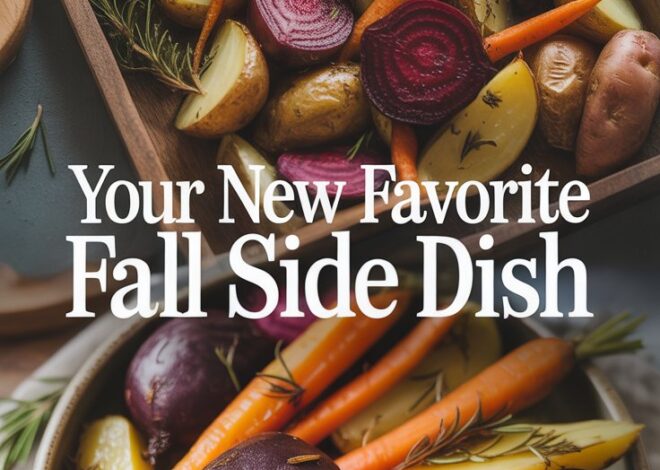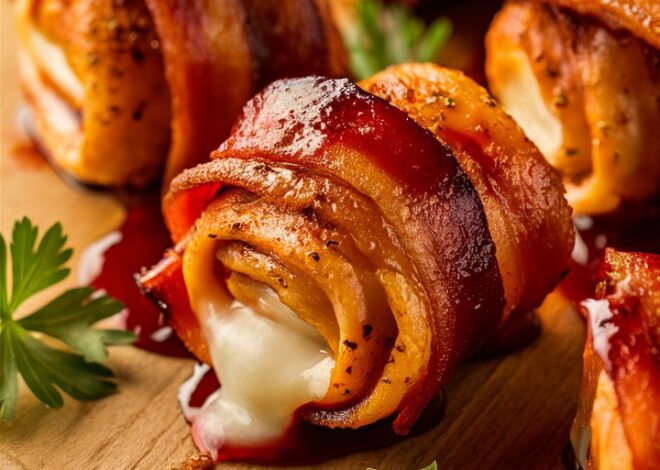
Easy Cheesy Scalloped Potatoes: Your New Favorite Side Dish 2025
When it comes to comfort food, few dishes deliver the kind of heartwarming satisfaction that scalloped potatoes offer. Creamy, cheesy, and golden on top, scalloped potatoes are a timeless classic that transcends generations, cultures, and occasions. Whether you’re planning a cozy family dinner, a festive holiday feast, or simply seeking the perfect side dish, this recipe for Easy Cheesy Scalloped Potatoes promises to steal the show.
But there’s more to this dish than meets the eye. In this comprehensive guide, we’ll explore the nuances of crafting the perfect scalloped potatoes from scratch, explore ingredient variations, uncover culinary secrets, and provide expert tips to elevate your cooking game.
What Are Scalloped Potatoes?
Scalloped potatoes are a traditional baked dish made with thinly sliced potatoes layered with a creamy sauce, often enhanced with cheese and seasoning. The name “scalloped” is believed to originate from the Old English word “collops,” which refers to slices of meat or, in this case, potatoes. Over the centuries, this humble side dish has evolved into a decadent treat, enriched with a variety of cheeses, creams, and spices.
Why You’ll Love This Recipe
- Rich and Creamy Texture: Every slice is bathed in a velvety sauce that binds the potatoes together.
- Golden, Cheesy Crust: The top layer bakes to a bubbly, golden perfection with a slight crisp.
- Customizable Flavors: Easily adaptable with add-ins like ham, bacon, or vegetables.
- Perfect for All Occasions: Whether it’s a Sunday dinner or Thanksgiving spread, it fits right in.
- Make-Ahead Friendly: Ideal for prepping in advance for stress-free entertaining.
Ingredients You’ll Need
To create the ultimate scalloped potatoes, gather the following high-quality ingredients:
- 2 pounds of Yukon Gold or Russet Potatoes: For the best texture and flavor.
- 2 tablespoons unsalted butter: The foundation for a smooth roux.
- 2 tablespoons all-purpose flour: Helps thicken the sauce.
- 2 cups whole milk (warmed): Creates a creamy base.
- 1 cup heavy cream: Adds richness and luxurious texture.
- 2 cups sharp cheddar cheese (freshly shredded): For that bold, cheesy taste.
- 1/2 teaspoon garlic powder: Infuses subtle aromatic flavor.
- 1/2 teaspoon onion powder: Complements the garlic for a savory depth.
- Salt and freshly ground black pepper: Essential for seasoning.
- 1 teaspoon fresh thyme leaves (plus extra for garnish): Adds a fresh, herbal note.
- Optional: 1/4 teaspoon smoked paprika for a hint of smokiness.
Step-by-Step Instructions
Step 1: Prepare the Potatoes
Wash the potatoes thoroughly. Peeling is optional, though many prefer peeled potatoes for a smoother texture. Slice them to about 1/8-inch thickness. Using a mandoline slicer ensures uniform slices that cook evenly.
Pro Tip: Soak sliced potatoes in cold water while preparing the sauce to prevent oxidation and browning.
Step 2: Make the Cheese Sauce
In a medium saucepan over medium heat, melt the butter. Once melted, whisk in the flour to create a roux. Cook for 1 minute, stirring constantly to avoid browning.
Gradually whisk in the warmed milk and cream, ensuring a lump-free mixture. Continue whisking until the sauce thickens — typically 5 to 7 minutes.
Step 3: Season and Add Cheese
Lower the heat to medium-low. Stir in garlic powder, onion powder, salt, pepper, and thyme. Gradually add 1.5 cups of shredded cheddar cheese, stirring until completely melted and the sauce is smooth. For a subtle smoky flavor, add smoked paprika at this stage.
Step 4: Layer the Dish
Preheat your oven to 375°F (190°C). Grease a medium-sized baking dish with butter or cooking spray.
Drain the potatoes and pat them dry with a paper towel. Arrange a layer of potato slices at the bottom of the dish. Spoon some cheese sauce over this layer, ensuring even coverage.
Repeat the process, layering potatoes and sauce until all ingredients are used, finishing with a final layer of sauce.
Step 5: Top and Bake
Sprinkle the remaining half cup of shredded cheese on top. Cover the dish with aluminum foil and bake for 30 minutes. Remove the foil and continue baking for another 25-30 minutes or until the top is golden and the potatoes are tender when pierced with a fork.
Step 6: Rest and Garnish
Allow the dish to rest for at least 10 minutes before serving. This helps the sauce set, making slicing easier. Garnish with a sprinkle of fresh thyme for a sophisticated touch.
Expert Tips for Perfect Scalloped Potatoes
- Use Freshly Shredded Cheese: Pre-shredded cheese contains anti-caking agents that may prevent smooth melting.
- Choose the Right Potato: Yukon Gold offers a creamy texture, while Russets break down slightly for a softer, fluffier result.
- Warm the Milk and Cream: This prevents shocking the roux, ensuring a smooth sauce.
- Don’t Skip the Resting Time: This crucial step helps the dish firm up.
- Layer Seasoning: Lightly seasoning the potatoes between layers enhances flavor throughout the dish.
Variations to Try
1. Scalloped Potatoes with Ham
Add diced, cooked ham between the layers for a heartier, protein-packed version.
2. Bacon and Caramelized Onion
Crispy bacon bits and sweet, caramelized onions add incredible depth.
3. Vegetarian Delight
Incorporate thin slices of zucchini, mushrooms, or spinach between potato layers.
4. Spicy Kick
For those who like heat, include thinly sliced jalapeños or a dash of cayenne pepper in the sauce.
5. Cheese Varieties
Experiment with gruyere, parmesan, or mozzarella for different flavor profiles.
Make-Ahead and Storage Instructions
- Make-Ahead: Assemble the dish and refrigerate up to 24 hours before baking. Add an extra 10-15 minutes to baking time if cooking straight from the fridge.
- Refrigeration: Store leftovers in an airtight container for up to 4 days.
- Freezing: Freeze in portions for up to 2 months. Thaw overnight before reheating.
- Reheating: Reheat in the oven at 350°F (175°C) covered with foil for 20-25 minutes, or microwave in portions for 2-3 minutes.
Nutritional Information (Per Serving — Approximate)
| Nutrient | Amount |
|---|---|
| Calories | 360 kcal |
| Protein | 11g |
| Carbohydrates | 32g |
| Fat | 22g |
| Saturated Fat | 13g |
| Fiber | 3g |
| Sugar | 4g |
| Sodium | 350mg |
| Calcium | 250mg |
| Cholesterol | 65mg |
Note: Values are estimates and may vary based on specific ingredients used.
Common Mistakes to Avoid
- Slicing Potatoes Unevenly: Results in uneven cooking; some slices may remain undercooked.
- Skipping Pre-Warmed Dairy: Cold milk and cream can cause the sauce to split.
- Overcrowding Layers: Thin layers cook more evenly and absorb sauce better.
- Overcooking: Watch carefully in the last 10 minutes to prevent drying out.
Frequently Asked Questions (FAQ)
What’s the best potato for scalloped potatoes?
Yukon Gold is best for creaminess and shape retention; Russet is better for a softer texture.
Can I use milk only instead of cream?
Yes, but the result will be less rich. Whole milk is recommended for the best texture.
Can I make this gluten-free?
Absolutely. Replace all-purpose flour with a 1:1 gluten-free flour blend or cornstarch slurry.
Can I double this recipe?
Yes. Use a larger dish and add 15-20 minutes to the baking time, checking for doneness.
How do I prevent the sauce from curdling?
Keep the heat moderate and add cheese on low heat to avoid breaking the sauce.
Can I prepare this in a slow cooker?
Yes, cook on low for 6-7 hours or high for 3-4 hours, though the top won’t get as crisp.
Perfect Pairings for Scalloped Potatoes
- Main Dishes: Roast chicken, glazed ham, grilled steak
- Side Dishes: Green beans almondine, roasted Brussels sprouts
- Salads: Classic Caesar salad, arugula and beet salad
- Breads: Garlic bread, crusty French loaf
The History of Scalloped Potatoes
The origins of scalloped potatoes can be traced to European peasant cuisine, where layering root vegetables with milk or cream made for hearty, filling meals. Over time, cheese became a luxurious addition, particularly in French and English culinary traditions. Today, variations of scalloped potatoes exist worldwide, each adapting local cheeses, spices, and techniques.
Conclusion
Easy Cheesy Scalloped Potatoes aren’t just a side dish—they’re an experience of culinary comfort, versatility, and tradition. By mastering this recipe, you’re not only preparing a delicious meal but also preserving a time-honored classic with your unique twist.
Whether it’s a festive holiday or a simple weeknight dinner, these scalloped potatoes will impress every time. Rich, creamy, customizable, and indulgent—this is comfort food at its finest.


